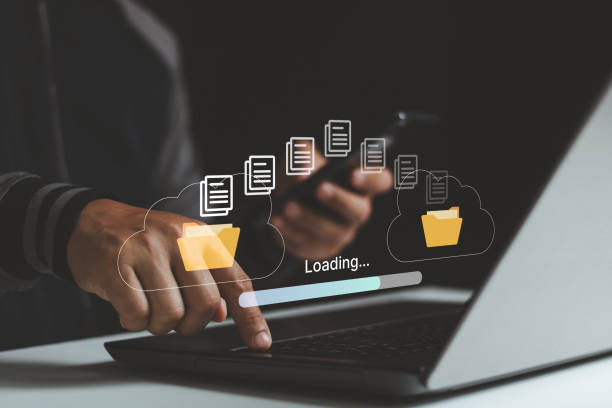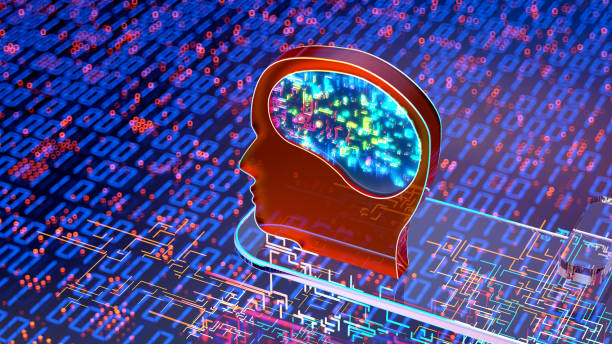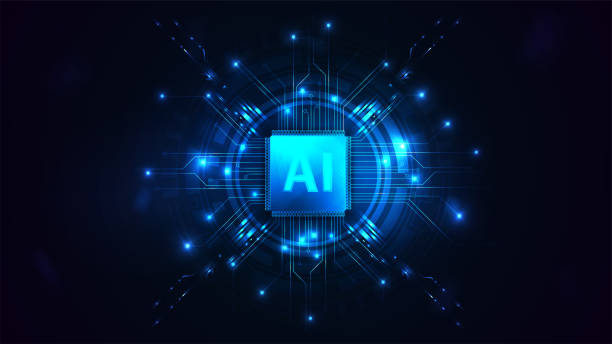An Introduction to the World of AI Robots
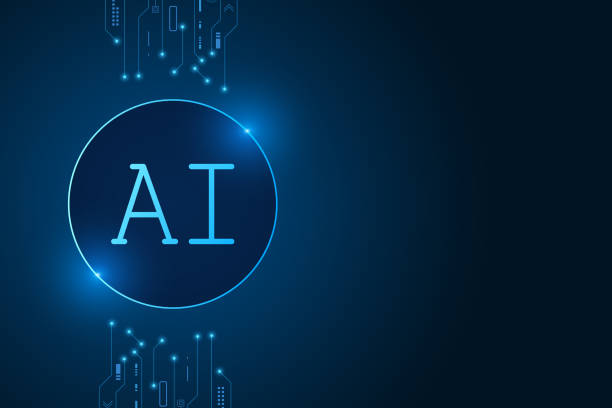
In recent decades, the concept of #AI_robot has moved beyond the pages of science fiction and become a pivotal phenomenon in the world of technology.
These autonomous entities, equipped with advanced Artificial Intelligence (AI) algorithms, are capable of understanding their environment, processing information, and performing complex tasks with unparalleled precision and speed.
From factory production lines to precise medical surgeries, the presence of an AI robot signifies a huge leap in productivity and efficiency.
These advancements not only herald a promising future but also raise profound questions about the role of humans alongside these emerging technologies.
The development of a robot with AI capabilities is a combination of computer science, mechanical engineering, electronics, and cognitive sciences.
It is this convergence of disciplines that enables the creation of machines that not only execute commands but are also capable of learning, adapting, and even making decisions in new situations.
These smart robotic systems continuously push the boundaries of what a machine can do.
The emergence of this new technology signals the arrival of an era where human-machine interaction will reach unprecedented levels, creating thought-provoking content for future generations.
Are you bothered by losing customers who visited your site to make a purchase?
RasaWeb is your specialized solution for a successful online store.
✅ Significantly increase your online sales
✅ Build trust and professional branding with customers⚡ Get free consultation from RasaWeb experts!
Fundamental Components and Technologies of an AI Robot
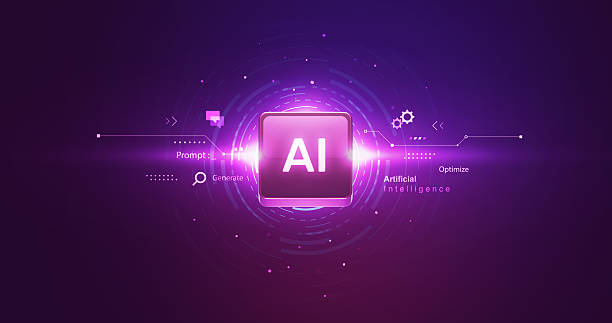
To understand how an AI robot operates, it is essential to become familiar with its core components and fundamental technologies.
Every robot, at its core, is a combination of hardware and software that enables it to interact with the physical world and make intelligent decisions.
The hardware section includes sensors (such as cameras, microphones, touch sensors) for collecting data from the environment, actuators (such as motors and mechanical arms) for movement and performing physical tasks, and a central processing unit (the robot’s brain) for data analysis.
The software section, however, forms the intelligent heart of the AI robot.
This section includes complex algorithms of Machine Learning and Deep Learning, which allow the robot to learn from past experiences, identify patterns, and make intelligent decisions.
Computer Vision for visual understanding, Natural Language Processing for understanding and generating human language, and Motion Planning for navigation and performing physical tasks are among the specialized technologies used in the development of an AI robot.
This complex combination of hardware and software makes it possible to create intelligent autonomous devices.
This is a technical and specialized explanation that helps in deeper understanding of this technology.
Extensive Applications of AI Robots Across Various Industries
![]()
AI robots no longer belong solely to science fiction films; they are rapidly reshaping industries and societies worldwide.
From automated production lines to precise surgeries and even customer services, the presence of a smart autonomous device is palpable.
In the manufacturing industry, collaborative robots (Cobots) work alongside humans to perform assembly, packaging, and quality control with greater precision and speed.
This automation leads to increased productivity and reduced human errors.
In the medical field, an AI robot can assist surgeons in complex operations, accelerate disease diagnosis, and even help in caring for the elderly and those in need.
In the service sector, from intelligent chatbot robots for answering customer inquiries to delivery robots in shopping centers, the scope of applications is expanding.
In agriculture, robots are used for precise pesticide spraying, crop harvesting, and monitoring plant health.
Even in space and underwater exploration, AI robots play a vital role in collecting data from hazardous and inaccessible environments.
This is an analysis of practical and specialized applications.
| Industry | Primary AI Robot Applications | Examples |
|---|---|---|
| Manufacturing and Industry | Production line automation, assembly, quality inspection, material handling | Welding robots, collaborative robots, warehousing robots |
| Medicine and Healthcare | Remote surgery, disease diagnosis, rehabilitation, patient care | Da Vinci surgical robot, nursing robots, rehabilitation robots |
| Services and Retail | Customer support, goods delivery, cleaning, information dissemination | Chatbots, food delivery robots, hotel cleaning robots |
| Agriculture | Crop harvesting, precise pesticide spraying, plant growth monitoring | Strawberry harvesting robots, agricultural drones |
| Defense and Security | Bomb disposal, identification and surveillance, search and rescue operations | Explosive ordnance disposal robots, reconnaissance drones |
Ethical and Social Challenges of the Rise of AI Robots
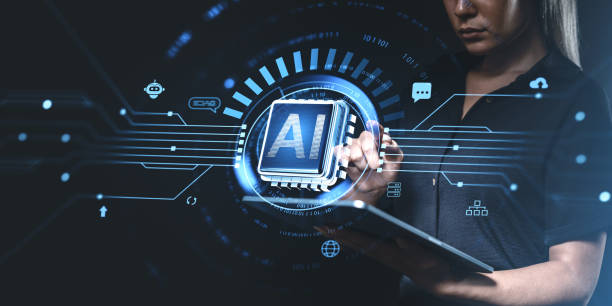
As the AI robot increasingly integrates into our daily lives, significant ethical and social questions and challenges arise.
One of the biggest concerns is the impact of this technology on the job market.
Will robots replace human jobs? While some jobs may become obsolete, new jobs are also expected to be created in the development, maintenance, and training of these robots.
However, the need to retrain the workforce and create support systems for individuals affected by automation is a serious challenge.
The issue of data privacy and security is also of high importance.
An AI robot operating in a home or workplace may collect a vast amount of personal data.
Ensuring how this data is stored, processed, and used requires strong legal and ethical frameworks.
Furthermore, accountability for robot errors is also a complex issue.
If an AI robot makes a wrong decision in a critical situation, who will be responsible for its consequences? The designer, manufacturer, or operator? These profound questions require extensive discussion within society to ensure that the development of this technology aligns with our human and social values.
This section presents thought-provoking and analytical content that addresses the complex dimensions of this phenomenon.
Are you bothered by losing customers who visited your site to make a purchase?
RasaWeb is your specialized solution for a successful online store.
✅ Significantly increase your online sales
✅ Build trust and professional branding with customers⚡ Get free consultation from RasaWeb experts!
Learning and Adaptation of Smart Robots to the Environment
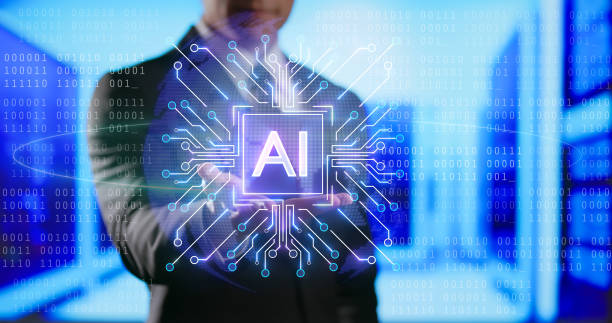
The ability to learn and adapt is a key feature that distinguishes an AI robot from merely programmed machines.
These robots improve through various machine learning methods, such as Supervised Learning, Unsupervised Learning, and Reinforcement Learning.
In supervised learning, the robot is trained with labeled data and learns specific patterns to perform particular tasks, such as identifying objects in images.
Unsupervised learning allows the AI robot to discover hidden patterns and structures in unlabeled data, such as grouping customers based on purchase behavior.
However, perhaps the most dynamic method is reinforcement learning, where the robot learns the optimal behavior through trial and error and receiving rewards or penalties for its actions in a simulated or real environment.
This method enables the robot to make intelligent decisions in complex and unpredictable environments and improve its performance over time.
For example, robots that learn complex games or acquire new motor skills typically benefit from reinforcement learning.
These capabilities allow robotic artificial intelligence to adapt to changing conditions and perform new tasks without needing to be reprogrammed for every scenario.
This section is an educational guide to understanding the learning mechanisms of robots.
Stunning Examples of AI Robots in Action

Perhaps the best way to understand the potential of an AI robot is to observe real-world examples in action.
Companies like Boston Dynamics are pioneers in developing humanoid and animal-like robots that can run, jump, overcome obstacles, and even perform complex tasks with precision.
Their Atlas robot possesses astonishing mobility capabilities previously only seen in movies.
The Spot robot (robotic dog) is used for industrial inspections and search and rescue operations, moving agilely in rough environments.
In the field of social robots, Pepper and Sophia are examples of humanoid robots capable of interacting with humans, recognizing emotions, and providing customer service or companionship.
These robots, utilizing robotic artificial intelligence, can answer questions, provide information, and even remember people’s faces and voices.
In the automotive industry, industrial robots perform vehicle assembly and painting with incredible precision and speed, leading to increased quality and reduced costs.
These newsworthy and fascinating examples demonstrate how the AI robot is becoming an indispensable part of modern life, with countless potentials for the future.
The Future of AI Robots and Upcoming Challenges
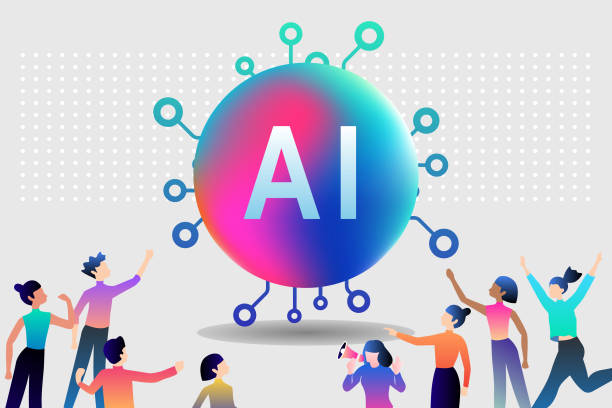
The future of AI robots promises even more significant advancements.
We expect to see the development of robots with Artificial General Intelligence (AGI) that are capable of performing any intellectual task a human can.
This could revolutionize all aspects of human life.
Smart autonomous robots will become more aware of their surroundings, capable of continuous learning, and able to collaborate seamlessly with humans.
From smart homes equipped with domestic robots to smart cities with advanced robotic infrastructures, the future vision is filled with the presence of an AI robot that helps improve the quality of life and work.
With this, however, several challenges also lie ahead on this path.
Security and cybersecurity issues, including protecting robots from hacker attacks and ensuring their safe operation, are crucial.
Developing legal and ethical frameworks for robotic artificial intelligence is also of high importance to ensure that this technology is used for the benefit of humanity and not against it.
The need to train specialized human resources for the design, development, and maintenance of these systems is also a major challenge.
Despite these challenges, extensive investment in research and development indicates that we are on the verge of an era where AI robot will play a central role in the advancement of human civilization.
This is a deep analysis of the future and its obstacles.
| Future Trend/Challenge | Description | Importance/Implication |
|---|---|---|
| Artificial General Intelligence (AGI) | Development of AI systems capable of performing any human intellectual task | Revolution in all industries, fundamental change in workforce and society |
| Autonomous and Independent Robots | Increased robot autonomy in decision-making and operation without human supervision | Increased efficiency, reduced need for human intervention, new ethical issues |
| Human-Robot Interaction (HRI) | Increased complex interactions and collaborations between humans and robots | Improved productivity, workplace safety, creation of human-robot hybrid teams |
| Cybersecurity and Robot Ethics | Protection of robotic systems against attacks and ensuring ethical use | Prevention of misuse, privacy protection, public trust |
| Robotic Systems Engineering | Increasing complexity in designing and building advanced robots | Need for multidisciplinary specialists, large-scale technical challenges |
Guidance for Integrating AI Robots into Businesses
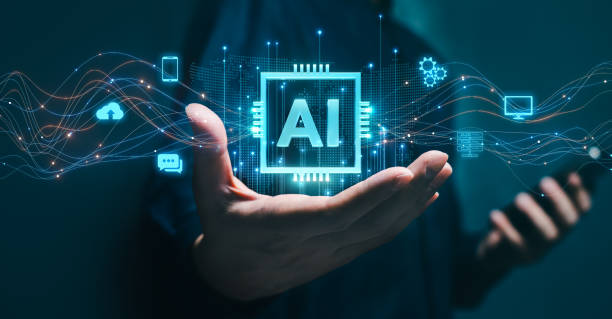
For businesses, integrating AI robots can be a transformative step, but it requires careful and strategic planning.
The first step is to identify areas where smart robotics can create the most value; for example, automating repetitive tasks, increasing accuracy, or improving safety.
Then, a comprehensive assessment should be conducted to examine the specific needs of the business and the technical and financial feasibility of implementing an AI robot.
Selecting the appropriate platform and robot, training employees to collaborate with robots, and defining new roles are critical next steps.
It is important that employees not only become familiar with how robots work but also understand how this technology can help improve their jobs.
Cybersecurity must also be considered from the outset to protect data and systems from threats.
Starting with small, manageable projects can help organizations gain experience and gradually increase scalability.
Continuous performance monitoring and optimization are also essential to ensure return on investment and maximize the utilization of robotic artificial intelligence.
This step-by-step guide provides an educational and specialized approach for businesses.
Tired of losing customers due to poor e-commerce website design? Solve this problem forever with RasaWeb!
✅ Increase sales and visitor-to-customer conversion rate
✅ Smooth and engaging user experience for your customers⚡ Get free consultation
The Role of Data in the Development and Performance of AI Robots

Data is the fuel for every AI robot.
The quality and quantity of data used to train a smart robotic system directly impact its performance, accuracy, and capabilities.
Robots learn and make decisions by collecting, processing, and analyzing vast amounts of data from their surroundings and past interactions.
This data can include images, videos, touch sensor data, audio data, and even behavioral records.
Data Preprocessing for noise removal, completion of missing information, and format standardization is a critical step.
Subsequently, this data is used to train machine learning models.
The more diverse and high-quality the training data, the better the AI robot will be able to generalize and adapt to new conditions.
Data security and privacy are also of paramount importance in this process, especially when robots operate in sensitive environments like homes or healthcare facilities.
Developing efficient and ethical data collection methods, as well as creating reliable infrastructures for data storage and processing, are among the main challenges in the advancement of robotic artificial intelligence.
This specialized and analytical section clarifies the importance of data.
AI Robots and Improving Quality of Life
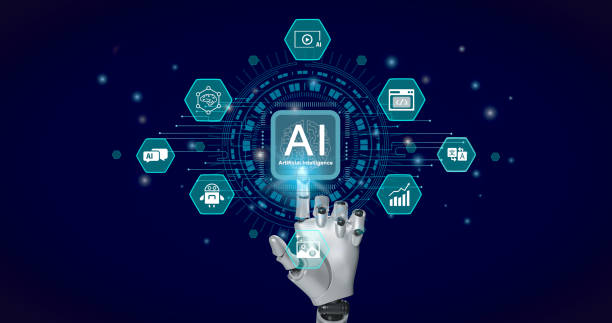
Beyond industrial and commercial applications, the AI robot holds immense potential for improving the quality of human life.
In healthcare, companion and nursing robots can help elderly individuals maintain their independence and stay in their homes.
These robots can remind them about medications, contact emergency services, or even act as companions to reduce loneliness.
For individuals with disabilities, smart autonomous devices can assist them with daily tasks, from mobility to communication and access to information.
In homes, smart domestic robots undertake tasks such as cleaning, cooking, and even energy management, freeing up more time for leisure and social activities for humans.
In education, educational robots can make the learning experience more engaging and effective for students by providing personalized and interactive content.
These technologies also play a vital role in public services and disaster relief, for example, in search and rescue operations in disaster-stricken areas or delivering humanitarian aid.
This entertaining yet beneficial aspect of the AI robot demonstrates how this technology can make our lives easier, safer, and more productive.
Frequently Asked Questions
| Question | Answer |
|---|---|
| What is an AI robot? | An AI robot (AI Robot) is a machine capable of understanding its environment, reasoning, learning, and making decisions to perform tasks autonomously. |
| What is the difference between regular robots and AI robots? | Regular robots perform repetitive tasks based on pre-programming, while AI robots can learn from experience, interact dynamically with the environment, and even behave in a way that mimics human intelligence. |
| What are the main applications of AI robots? | They are used in industries (manufacturing, assembly), medicine (surgery, diagnosis), services (customer support, domestic), exploration (space, underwater), and many other fields. |
| What technologies are used in building AI robots? | Machine Learning, Computer Vision, Natural Language Processing, Deep Learning, and Robotics are among the key technologies. |
| Can AI robots have emotions? | Currently, robots do not have emotions in the human sense. They can recognize and react to emotions, but they do not experience emotions themselves. |
| What are the main challenges in developing AI robots? | Safety, reliability, ethics, autonomy, adaptation to complex environments, and natural human interaction are significant challenges. |
| How are AI robots trained? | They are typically trained using large amounts of data, machine learning, and deep learning algorithms to identify patterns and make decisions. |
| Examples of AI robots in daily life? | Smart robotic vacuum cleaners, customer support chatbots, self-driving cars, and surgical robots in hospitals. |
| Are AI robots a threat to human jobs? | Some repetitive jobs may be automated, but at the same time, robots can increase productivity and create new jobs in the development, maintenance, and supervision of these systems. |
| How is the future of AI robots predicted? | They are expected to become smarter, more autonomous, and capable of performing more complex tasks, engaging in closer interaction with humans in various environments. |
And other services of RasaWeb Advertising Agency in the field of advertising:
Smart Conversion Rate Optimization: A dedicated service for growing user engagement based on Google Ads management.
Smart Marketplace: Designed for businesses seeking online growth through intelligent data analysis.
Smart Brand Identity: A fast and efficient solution for improving SEO ranking with a focus on marketing automation.
Smart Google Ads: An innovative service for increasing click-through rates through intelligent data analysis.
Smart Brand Identity: Transform campaign management with personalized user experience.
And over hundreds of other services in the field of internet advertising, advertising consultation, and organizational solutions.
Internet Advertising | Advertising Strategy | Advertorials
Sources
AI Robots and Future Developments in FarsiTekApplications of Robotics and AI in Daily Life in Ayandeh OnlineEthical Challenges of Autonomous Robots in DaneshTechRecent Advancements in Building Smart Robots in Novin News
❓ Are you ready to transform your business in the digital world? RasaWeb Afarin Digital Marketing Agency, by offering comprehensive services including professional e-commerce website design, Search Engine Optimization (SEO), and advertising campaign management, is your partner on the path to achieving online success. Contact us today and secure the digital future of your business.
📍 Tehran, Mirdamad Street, next to Bank Markazi, Kouche Kazeroun Jonoubi, Kouche Ramin, No. 6


